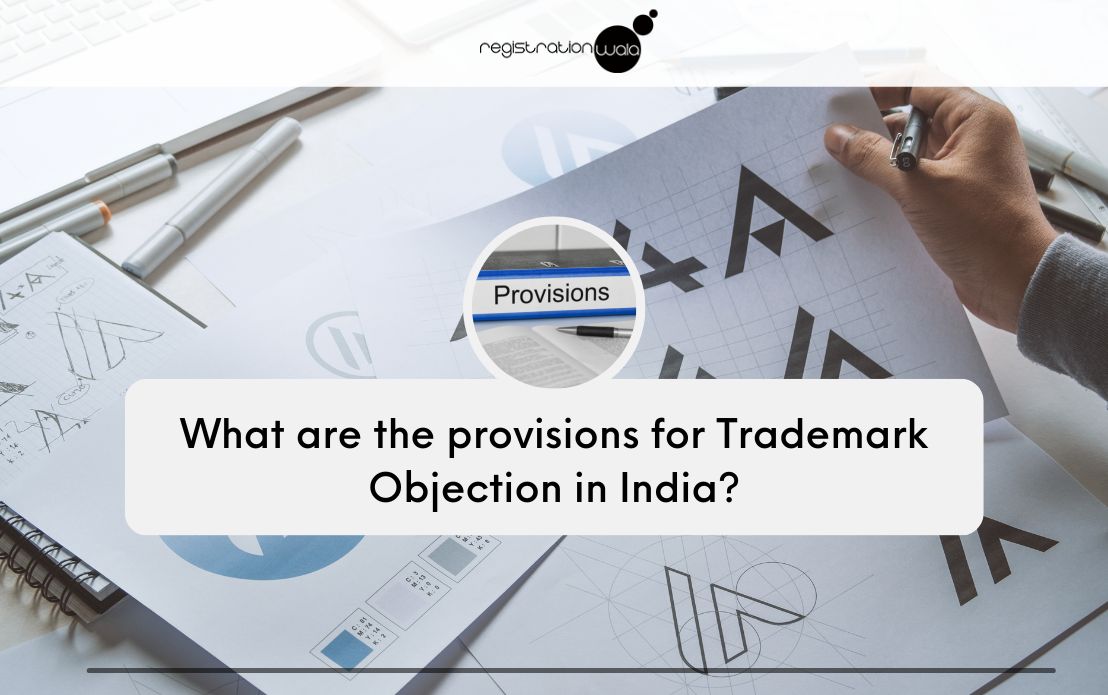Trademarks refer to a phrase, word, or symbol. It denotes a specific product. A Trademark can legally differentiate it from all other products of its kind. It is a significant intellectual property used by companies to distinguish their brand from the competitors in the market. Trademarks can identify and protect words and design elements of a product/service. It can be a logo, slogan, or even the product’s name. Trademarks are governed by the Trade Marks Act of 1999. This Act lays down various provisions to explain the procedure and steps involved in registering the Trademark. The RoT grants the trademarks, i.e., the Registrar of Trademarks. In registering the trademarks, an applicant can encounter a hurdle called Trademark Objection.
What governs Trademark Objection regulations in India?
An applicant faces Trademark Objection at the initial stages of the registration process. The Registrar raises objections at the time of examining the application. The Registrar examines the trademark application and identifies grounds of refusal under Sections 9 and 11 of the Trademarks Act. Now let’s discuss how to handle trademark objections raised under the Act.
Objection regulations as per Section 9
Section 9 is considered to be absolute grounds for refusal. Therefore, the Registrar cannot grant a trademark if an objection arises under Section 9.
Lack Distinctiveness
According to this objection, an applicant’s Trademark cannot distinguish from another person’s Trademark. In such cases, developing abstract as well as unconventional designs is advisable to make your mark stand out. The registration applicant can go through the journals of Trademarks to study the accepted trademarks. They must also understand what makes those logos different from the other company’s.
Indications of Kind and other Qualities
This trademark objection states that an applicant’s Trademark should not reflect the characteristics of goods or services rendered. It must not reflect any details pertaining to the owner’s goods or services.
For Example, an applicant wants to register his Trademark engaged in manufacturing drinking straws which glow in the dark. This application can receive an objection under Section 9 of the Trademark Act because it indicates the nature and type of manufactured goods. When applying for a trademark, one must remember that the Trademark must not reflect any attributes about its product or service. By doing so, the owner can evade such objections.
Also Read: Trademark Registration in India
Customary Representation
An applicant’s mark should not be or contain anything considered customary or used in the current language. In this sense, an applicant must avoid words used in daily communication or trade.
Deceptive Appearance
An applicant’s mark should reflect his product or service and not confuse the customers with the products and services offered in the market.
Religious Inclinations
An applicant’s mark should not offend any religion. An applicant should avoid symbols as well as pictures associated with any of the religions practised by society.
Scandalous Appearance
Also, an applicant’s mark should not have obscene content that might be against morality and law, which might cause public outrage in society.
Emblems and Names Act 1950
An applicant’s mark should not violate any Emblems and Names Act 1950. For instance, a registration applicant cannot sell his goods or render his or her services under the national emblem of India.
Also Read: Pvt Ltd Company: Best Model for Proprietorship Conversion
Section 11 Objections Regulations
Section 11 Trademark Objections are considered as relative grounds of refusal. Under this refusal, the main ground is that the applicant’s Trademark is similar to a registered Trademark dealing with almost similar or similar goods as well as services. Section 11 Trademark Objections are not absolute. If the Registrar points out that the mark is similar to the one that has already attained the registered status, then the onus is on the registration applicant to show that their trademarks vary in nature, appearance, or the goods or services they deal in. Once the Registrar is satisfied that the Trademark is different from the existing ones, the Registrar will accept the mark and advertise it.
